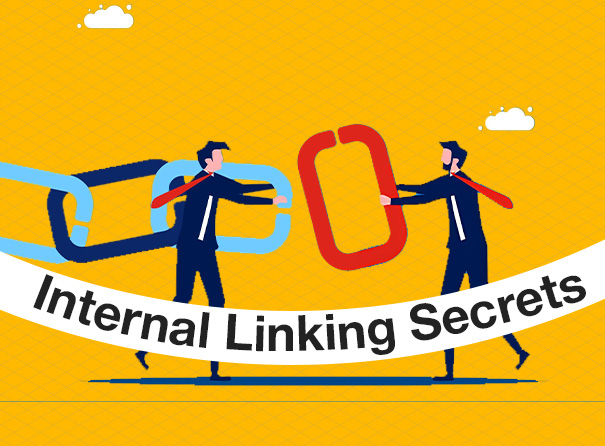TL;DR: - Internal linking is one of the most underrated yet powerful SEO tactics in 2025. A strong SEO internal linking strategy boosts crawlability, improves PageRank flow, and strengthens your domain authority. Focus on topic clusters, descriptive anchor text, and routine link audits to build a clear, user-first site structure. When done strategically, internal links improve both rankings and conversions, turning your content into an authority-building network.
Why Internal Linking Still Matters for SEO in 2025
It's one of the most infuriating things in content marketing: You've spent hours crafting high-quality content, but your rankings just aren't moving. You may have wonderful external backlinks, but if you feel like you're doing everything right and yet nothing is changing, the missing ingredient is undoubtedly your SEO internal linking strategy. The silent SEO lever is important to get right in order to guide authority, enhance site structure, and give search engines an idea of your content hierarchy.
Curious about driving domain authority and stabilizing rankings? The key is a well-thought-out, well-executed internal link structure. If this level of technical implementation is intimidating, don't forget that professional assistance can be found; numerous companies opt to use professional search engine optimization services to put such complex strategies into place.
How a Strong SEO Internal Linking Strategy Moves Rankings Faster
To fully comprehend how to build domain authority (DA) and get more visibility, you must think like a search engine bot. Internal links are the roads these bots use to crawl your website. A strong internal link structure guarantees two important things:
- Flow of Authority (PageRank): Links transfer "authority" or "link equity" from high pages to low, related pages. A well-placed link from a page with high DA to a new article is the quickest means of giving a ranking boost to the new page.
- Crawl Efficiency & Indexing: An efficiently linked site is crawled better. This facilitates faster indexing of new content and assures that all your vital pages are discovered. Your site's organization becomes more understandable, describing the relationship and relative significance of all your content in 2025.
The Three Types of Internal Links Every Website Needs
Each link has a different function for both search engines and users:
- Navigational internal links: -These are most frequent and occur in your sidebar, footer, and main menu. They establish your website's fundamental structure and assist in navigating between key sections (e.g., "Home," "Services," "Blog").
- Contextual internal links: - These are links embedded in the body copy of your content. These are the strongest kind for SEO since they are contextual and contain descriptive anchor text, which directly notifies search engines on the connection between two pages.
- Utility internal links: - These links boost user experience (UX) and interaction. Some common examples are Table of Contents (TOC) links, breadcrumbs (displaying the page hierarchy), and "Related Posts" blocks located at the bottom of a blog.
3 Proven Internal Linking Strategies That Actually Work in 2025
Breaking away from haphazard links, these three techniques will transform your site structure into an SEO powerhouse:
Build Topic Clusters the Right Way
Topic clusters are the definitive method of organizing content in modern SEO. The model uses a Pillar Page (a detailed, high-level summary of a general topic) that links to multiple support Cluster Content pages (in-depth articles on particular subtopics)
The interlinking logic is exact:
- All the Cluster pages link to the Pillar.
- The Cluster pages each link back to the Pillar page.
- Lateral Cluster links (cluster-to-cluster) can also be applied when applicable.
This format says to Google, "We are the absolute authority on this whole topic." If you require more information on this format, there is a pillar pages vs content clusters breakdown that explains the framework.
- How to execute pillar–cluster linking responsibly: - Have all links use varied descriptive anchor text. Each link should actually contribute value to the user's experience, not merely get added for linking's sake.
- Common mistakes in cluster-based linking: - Only linking out from the pillar, or repeating the same anchor text for all links, are common mistakes that dilute the structure's effect.
Utilize Descriptive and Diverse Anchor Text
The anchor text (the highlighted text) is what informs search engines what the page being linked to is about.
To get the most value from them, your anchors need to be relevant to the destination page. Generic text like "click here" or "read more" is a wasted opportunity. Instead, use natural, varied language that clearly describes the target content. Rotation of phrases is the key—don't include the same exact keyword for one page every time.
Safe anchor text variations
Utilize a combination of:
- Exact Match (e.g., "internal linking secrets")
- Partial Match (e.g., "ways to improve your SEO with links")
- Branded (e.g., "the Inqnest guide")
- Sentence/Phrase (e.g., "a full guide on this subject")
Anchor errors that ruin relevance
Overusing an exact match keyword is the worst error. This appears unnatural and will water down the power of the link. Make the phrasing natural and easy to read.
Regularly Audit and Repair Internal Link Problems
Even the best websites acquire problems with time. Regular auditing is necessary to keep your structure solid and includes:
- Broken links (404s): User and bot dead ends. Repair or delete them right away.
- Orphan pages: Pages without internal links pointing to them. They can't transfer authority or be crawled in easily.
- Redirect chains: A link that goes through several redirects (Page A $\\rightarrow$ Page B $\\rightarrow$ Page C) retards crawling.
You can often discover relevant SEO assets when you conduct an internal link audit, for instance, a review of local link-building strategies could prove helpful if you come across pages that are geographically specific.
What to fix first in an audit
Prioritize repairing broken links and removing orphan pages—these provide the quickest return on effort.
How to re-link older pages when new content is published
Always return to relevant, high-authority older pages and include a fresh contextual link to your new content. This gives the new page an instant authority increase.
Why Strategic Internal Linking Beats Random Linking
Randomly distributing links weakens the strength of your best links. The aim is to drive authority strategically to your most important pages. Random linking also contributes to a bad user experience, making users click on meaningless links and immediately exit the site. Strategic linking, on the other hand, enhances UX by directing users to the next logical piece of information, thus driving engagement and time on site.
Best Practices for Scalable SEO Internal Linking
- Anchor Variation: Never use the same exact match anchor text repeatedly for the same target page.
- Avoid Thin Pages: Do not link to pages having little or no content. It transfers authority to pages that are unable to convert it into ranking power.
- Hierarchically Linking: Connect to your pillar pages and down to your deep cluster content. Don't go about cross-linking at random in a way that doesn't make sense to a user.
- When to Rewrite Old Content Rather vs Just Adding Internal Links: Rewrite the old content if it is out of date or incorrect. If it is good quality but simply underperforming, attempt to add solid internal links from your authority pages to begin with.
- Internal Linking as a Conversion Lever—Not SEO Alone: Consider the journey of your user. A well-placed internal link can take a reader from a discovery blog to a solution service page or a lead magnet, from passive reader to active prospect. This is where careful execution pays off.
Conclusion
Internal linking is not a secondary activity—it's the cornerstone of an effective SEO strategy that provides the solution to the question of how to build domain authority and ensure ranking stability. By implementing topic clusters, using varied anchor text, and conducting routine audits, you transform your website from a random group of pages to a unified, authority-generating content machine. This link building strategy puts your acquired link equity into overdrive, making your content increasingly powerful with each new piece of content that you release.
To ensure this level of strategic execution is maintained on your site, explore the professional search engine optimization services offered by Inqnest.
Frequently Asked Questions About Internal Linking
1. What is an internal linking strategy in SEO?
An internal linking strategy refers to linking relevant pages within your website using contextual and navigational links. It helps search engines crawl pages effectively, distributes link equity, and strengthens domain authority.
2. How does internal linking improve SEO rankings?
Internal links pass authority from high-performing pages to newer or less visible ones, improving their ability to rank. They also enhance crawl efficiency, content hierarchy, and user experience, which all contribute to better SEO performance.
3. What are the best internal linking practices for 2025?
Use topic clusters and pillar pages, add contextual links with natural anchor text, repair broken links, and audit orphan pages regularly. Avoid repetitive anchor text and irrelevant cross-linking to maintain SEO integrity.
4. How often should I audit internal links on my website?
Run an internal link audit every quarter to identify broken links, redirects, and orphan pages. Frequent audits ensure authority flows efficiently and that new content is properly linked to older, high-authority pages.
5. Can internal linking increase domain authority?
Yes. Internal linking helps distribute PageRank across your site, making your strongest pages support others. Combined with quality content and backlinks, it directly contributes to higher domain authority and ranking stability.











.png)








.jpg)



.png)
.png)
.png)

.png)
